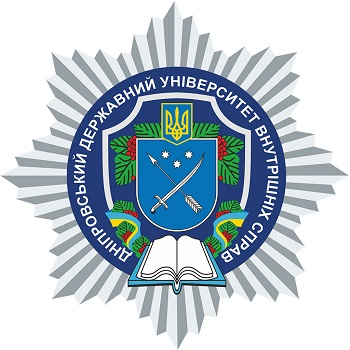MODEL OF BLENDED LEARNING IN MODERN CONDITIONS
DOI:
https://doi.org/10.31733/2078-3566-2023-4-245-251Keywords:
blended learning, technological progress, face-to-face learning, online learning, educational trajectory, transformation of higher education.Abstract
Blended learning, a combination of traditional face-to-face learning and online learning, is becoming increasingly popular in today’s educational environment. This approach provides a more flexible and personalized learning experience, catering to different learning styles and paces. In the current environment, under the influence of the COVID-19 pandemic and war, blended learning has become even more important, as it provides a way to continue education while ensuring safety and flexibility. The article examines blended learning models that have proven effective in providing continuity of education by adapting to a variety of challenges, such as social distancing, distance learning, and individual student needs. Blended learning also promotes digital literacy and self-regulated learning skills that are essential in today’s technological world. Each of the blended learning models offers educators unique opportunities to create dynamic and engaging learning environments that take advantage of both traditional and online learning resources. They can promote active learning, collaboration, and individualized instruction, ultimately improving the overall learning experience for students. Educators are constantly exploring innovative ways to integrate technology and traditional learning methods to create seamless and effective blended learning. As technology continues to advance, it is likely that blended learning will become an even more integral part of the educational environment.
References
1. Котун К., Лук’янова Л. Тлумачення сутності поняття «змішане навчання» українськими та зарубіжними вченими. URL : https://ipoodhab.com/project-work-centre/blended-learning-projectpost-38.
2. Кухаренко В. М. Березенська С.М., Бугайчук К.Л., Олійник Н.Ю. Теорія та практика змішаного навчання: монографія. Харків, «Міськдрук», НТУ «ХПІ», 2016. 284 с.
3. Бугайчук К. Л. Змішане навчання: теоретичний аналіз та стратегія впровадження в освітній процес вищих навчальних закладів. Інформаційні технології і засоби навчання. 2016. Т. 54. Вип. 4. С. 1-18. .
4. Нестуля О., Нестуля С., Кононец Н. Варіативні моделі зміішаного навчання (Blended Learning) у вищіи школі: досвід ПУЕТ. Вища школа. 2021. № 11. C. 7-20. URL : http://dspace.puet.edu.ua/bitstream/123456789/11622/3/Vischa_shkola_2021_11_7_Nestulia.pdf
5. Сaner, Mustafa. The definition of blended learning in higher education. 2012. URL : https://doi.org/10.4018/978-1-4666-0939-6.ch002.
6. Christensen M., Horn M., Staker H. Is K-12 Blended Learning Disruptive? An introduction to the theory of hybrids. Clayton Chris- tensen Institute. 2013. URL : https://files.eric.ed.gov/fulltext/ED566878.pdf
7. Boelens, R., De Wever, B., & Voet, M. Four key challenges to the design of blended learning: A systematic literature review. Educational Research Review, 2017. 22. Pp. 1-18.
8. Blended Learning in Training & Development. URL : https://intellek.io/blog/blended-learning/.
9. Blended Learning Models. URL : https://www.blendedlearning.org/models/.
10. Галушко И. М., Галушко Е. И., Веселова С. И. Инновационный подход к решению дидактических задач высшего образования. Теория и методика преподавания фундаментальных дисциплин в высшей школе: Сборник научных трудов. Выпуск VI. Кривой Рог: Издательский отдел НМетАУ, 2010. С. 51-56.
11. Галушко И. М., Веселова С. И., Галушко Е. И. Об использовании концепции типов восприятия мира при обучении фундаментальным дисциплинам. Теория и методика преподавания фундаментальных дисциплин в высшей школе: Сборник научных трудов. Выпуск V. Кривой Рог: Издательский отдел НМетАУ, 2008. С. 107-110.
12. Galushko, O., Kovalenko-Marchenkova, Ye. & Chistyakov, V. Didactic aspects of distance learning in the conditions of pandemic and martial law. Scientific Bulletin of Dnipropetrovsk State University of Internal Affairs. 2022. Special Issue № 1. Pp. 324-330. Doi : 10.31733/2078-3566-2022-5-324-330.
13. Luchaninova, O., Markina, L., Kovalenko-Marchenkova, Ye, Zhovnirchyk, Y., & Mishchenko, D. (2020). Professional competence development of future professionals in vocational education for the labour market. Práxis Educacional. 2020. 16 (37). Pp. 203-223. URL : https://doi.org/10.22481/praxisedu.v16i37.6165.
14. Каховська О. В., Коваленко-Марченкова Є. В. Kонкурентоспроможність випускників як запорука якості вищої освіти. Тези доповідей всеукраїнської науково-практичної конференції «Консорціуми університетів: забезпечення сталого розвитку закладів вищої освіти України та їхньої конкурентоспроможності». Дніпро : ДНУ, 2020. С. 144-146.
15. Наливайко Л. Р., Марценюк Л. В. Сучасний погляд на перспективи розвитку дистанційного навчання у вищій освіті. Наук. вісн. Ужгород. нац. ун-ту. Серія: Право. 2020. Вип. 62. С. 57–64.
16. Марценюк Л. Дуальна освіта як засіб ефективного поєднання теорії та практики. Review of transport economics and management, 2020, 4 (20). С. 154–164. URL : https://doi.org/10.15802/rtem2020/228876
17. Tishchenkova S., Martseniuk L., Cherniak N., Hruzdiev O. Higher Education in the Post-Pandemic World: Prospects for Revival and Risks for Oblivion. Economic Annals-XXI. 2021. Vol. 191, iss. 7–8 (1). Pp. 16-29. Doi : 10.21003/ea.V191-02.

